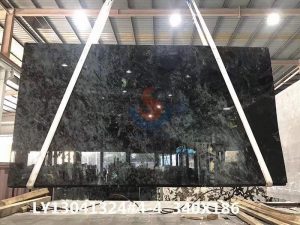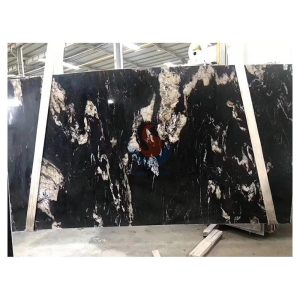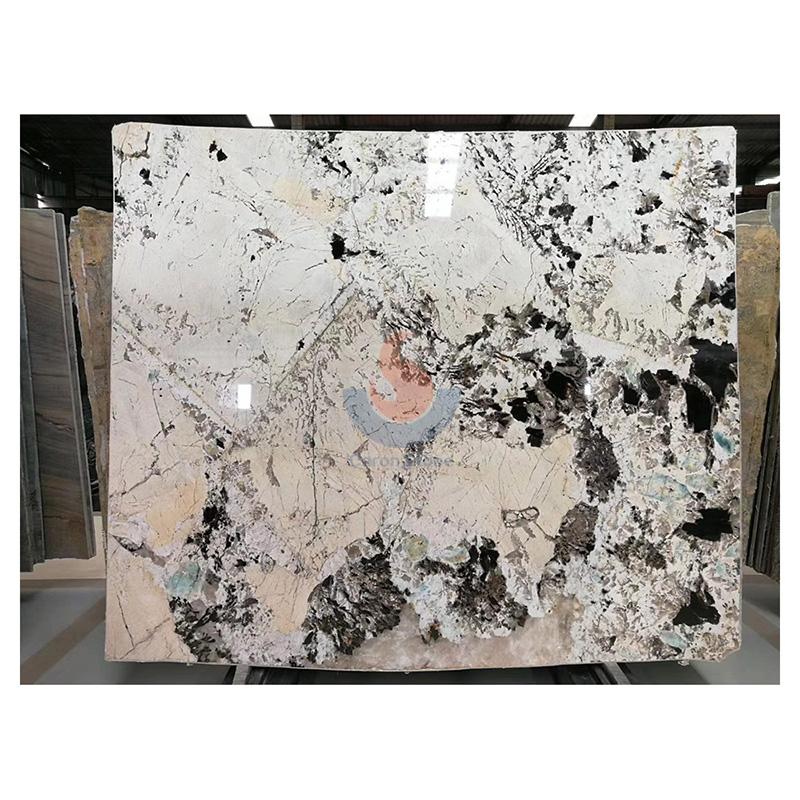Stairs are not only a passage connecting floors, but also an important part of home design. Granite is now one of the perfect materials for bespoke staircases because of its strong, stylish and sophisticated qualities. How then would one determine the exact amount of granite required for a flawless custom staircase? This question seems simple, but it actually involves multiple factors, including the design, size, and specifications of the granite of the stairs. We will examine closely the quantity of granite used in customizing staircases in this post and provide you some useful advice to enable you to better organize your staircase project.

The Blue Labradoriteblue Australe Granite origin from Madagascar
Determinants of the amount of custom stairs
When calculating the amount of granite required for custom stairs, we first need to understand several key factors that affect the amount. These elements comprise the stair design, stair size, granite thickness and specs, and other uses of the staircase.
1. Design style of stairs
The amount of granite utilized directly depends on the staircase’s architectural approach. Staircase designs can be essentially separated into straight steps, spiral stairs, zigzag stairs, and spiral stairs. Different styles of stairs are not only different in structure, but also have significant differences in the amount of granite used.
The most often used staircase type is the straight one, which spans one floor to another. Due to its simple structure, the amount of granite required is relatively easy to calculate. Usually, the area of granite needed is the area of each step times the number of stairs plus the handrails and side embellishments.
Spiral staircase: This type of staircase is becoming more and more popular in modern homes. Although the spiral staircase’s form makes space use more flexible, it also results in more granite being used. More granite is needed to cut and prepare since the form of every step is frequently trapezoidal or uneven.
Zigzag staircase: There is a turning point in the middle of the zigzag staircase, usually in an L-shape or U-shape. The granite needed is somewhat more than that of a straight staircase as its corners call for further decorative treatment.
Spiral staircase: The shape of a spiral staircase is very unique and usually occupies a small area, but because each step is an irregular shape, the amount of granite required is much more than other types of stairs, and it is more difficult to cut and process.
2. The size of the stairs
The stairs’ dimensions comprise their width, depth, and height as well as their These aspects define the granite needed for every stride. Residential stairs often have a step width of 80 to 100 cm, a depth of 25 to 30 cm, and a height of 15 to 18 cm generally. Based on these dimensions, the surface area of each step can be calculated, and then multiplied by the total number of steps in the staircase to obtain the total area of granite used.
Step width: The wider the steps of the staircase, the larger the area of granite required. Usually, the step width should be not less than 80 cm to guarantee comfort.
The depth controls the area of every step. One needs more stone for a single step the more depth there is.
Though the height of the staircase dictates the total number of steps, which indirectly influences the overall amount of granite needed, the height does not directly effect the amount of granite utilized on the surface of the step.
3. Granite thickness and specifications
The thickness and specifications of granite are also one of the important factors affecting the amount. Usually, granite used for stairs has a thickness between two and three cm. Although the weight and expense of each granite block will rise, the thinner the layer the fewer granite blocks might be used. Furthermore influencing the quantity and complexity of installation will be the granite’s (i.e. stone size) requirements.
Thickness: The granite thickness of the stair steps needs to be strong enough, usually 2-3 cm thickness is selected. Thicker granite can be chosen should a stronger construction be needed, however this will raise material and installation expenses.
Specifications: Large-sized granite slabs can reduce seams and improve the overall aesthetics, but are generally more difficult to process and install. Although small-sized granite takes more cutting and splicing, which could lead to material loss, it can be more adaptable to fit various stair designs.
4. Additional functions of the stairs
Apart from the fundamental step construction, various stair designs incorporate other purposes including handrails, railings, skirtings, etc. These other purposes also call for granite, which raises the overall count.
Granite handrails and railings not only look great and last but also help to accentuate the staircase’ general texture. Depending on the complexity of the design, the amount of granite required will also vary.
Usually ornamented with granite to preserve consistency of design, the skirting is the change between the staircase and the wall. Though it is somewhat little, this component still has to be considered.
How to calculate the amount of granite needed
Knowing the above elements helps us to make some simple calculations to project the overall stone required for a bespoke staircase.
1. Calculate the area of each step
With the staircase steps measuring 90 cm in width and 30 cm in depth, every step’s surface area is:
Text {area} = 0.9 \times 0.3 = 0.27 \text{square meters}.
If the staircase has 15 steps, the total surface area of the steps is:
text{total area} = 0.27 \times 15 = 4.05 \text{square meters}
2. Calculate the amount of side and additional parts
Assuming that each side of the staircase is 1 meter high and 15 meters long, the surface area of each side is if granite needs to be adorned on as well.
text{side area} = 1 \times 15 = 15 \text{square metres}
Add the two sides’ area.
text{total side area} = 15 \times 2 = 30 \text{square meters}
3. Total granite usage
Including the step and side areas and considering a certain loss—usually 5–10%, the total granite needed is:
text{Total usage} = (4.05 + 30) \times 1.1 = 37.46 \text{square meters}

Brazilian black sea wave Titanium Granite cosmic black granite
The amount of granite required for a custom staircase depends on many factors, including the design and size of the staircase, the specifications of the granite, etc. Careful computation of these elements helps you to more precisely project the required quantity of materials, so assuring the seamless development of the project and helping to limit expenses. Granite stairs are a good investment whether your priorities are durability or appearance. With this post, perhaps, you will have a better knowledge of the quantity of granite needed for bespoke stairs and make sensible judgments in next building projects.





